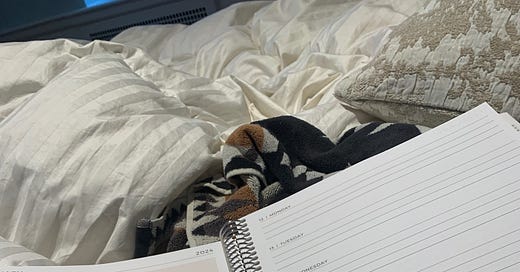I find corporate meetings fascinating — from an anthropological perspective, that is. Organizations quickly adopt their own norms, one of which is that all meetings default to a certain length. That might be 30 minutes, but 60 minutes tends to be most common.
Because people have a lot of meetings, many of these meetings get scheduled back to back. Here we discover a problem. If you’re in a meeting that runs from 9:00 a.m. to 10:00 a.m. and another that runs from 10:00 a.m. to 11:00 a.m., you’re expected to be in two different meetings at precisely 10:00 a.m.
If the meetings are in different places, this is a physical impossibility. But even if both meetings are on Zoom, and even if the first ends precisely on time, you’ll still be a minute late to the second because it takes a non-zero amount of time to log in (to say nothing of using the restroom). You also won’t have time to make any follow-up notes from the first meeting, which means those to-dos may fade to the back of your mind until they urgently boil back up.
And, of course, many meetings do not end on time. So all meetings after the first start in a discombobulated fashion as you decide whether to wait for latecomers, or shift the agenda.
Lessons from middle school
Fortunately, this is a comparatively easy problem to solve. Indeed, it’s one that most high schools and middle schools have solved. You need to create a “passing period” between scheduled events so people can get from one commitment to another.
If you’re in a leadership role at your organization, one obvious way to do this is to set the norm of having meetings start on the hour and end 10 minutes before the hour. That is, they are all 50 minutes long instead of 60. With a 10-minute haircut, even participants with back-to-back meetings aren’t inevitably late for all their meetings of the day except the first.
A few organizations choose a corollary to this idea — that is, all meetings start 10 minutes after the hour and end on the hour, and that can work, but this is slightly less intuitive to explain to any external folks joining a meeting. So I like on the hour and ending 10 minutes before.
Now it is true that 50 minutes is less than 60 minutes. And if you were accustomed to filling every single one of those 60 minutes efficiently in all of your meetings then you may have to rethink things. But in my experience, there are very few corporate meetings that were scheduled for 60 minutes that could not take 50. Indeed, since many meetings start late, and people get antsy as the clock strikes the hour, the material may often be taking closer to 50 minutes anyway. Best to acknowledge it.
Challenge the default
Now, if you are not in a leadership role, this might be a bit harder to establish. But you can certainly make it happen for any meetings under your control. If you know people are going to be late, plan on starting at 5 minutes after the hour. End 10 minutes before as a show of good citizenship. Yep, that means turning your 60-minute meetings into 45-minute ones. But hey, you read this newsletter and you thrive on doing things effectively. You can figure it out!
Of course, in the grand scheme of things it might be better to just have fewer meetings. Ideally, when a meeting happens, it is because something needs to change in the world that can only result from bringing those people together. The length of the meeting is determined by what needs to happen, and not by some arbitrary clock time. If you need 20 minutes, you set the meeting for 20 minutes. If you need 37.5 minutes, you ask for that, and everyone is going to assume your agenda is incredibly well thought through.
But if that’s not going to happen, the next best solution is to shorten all meetings just a little. People won’t be late. They can catch their breath. They can think about what just happened. And then they can start the next thing. This is a fairly simple fix that can have a big impact in terms of increasing focus and avoiding stress.



